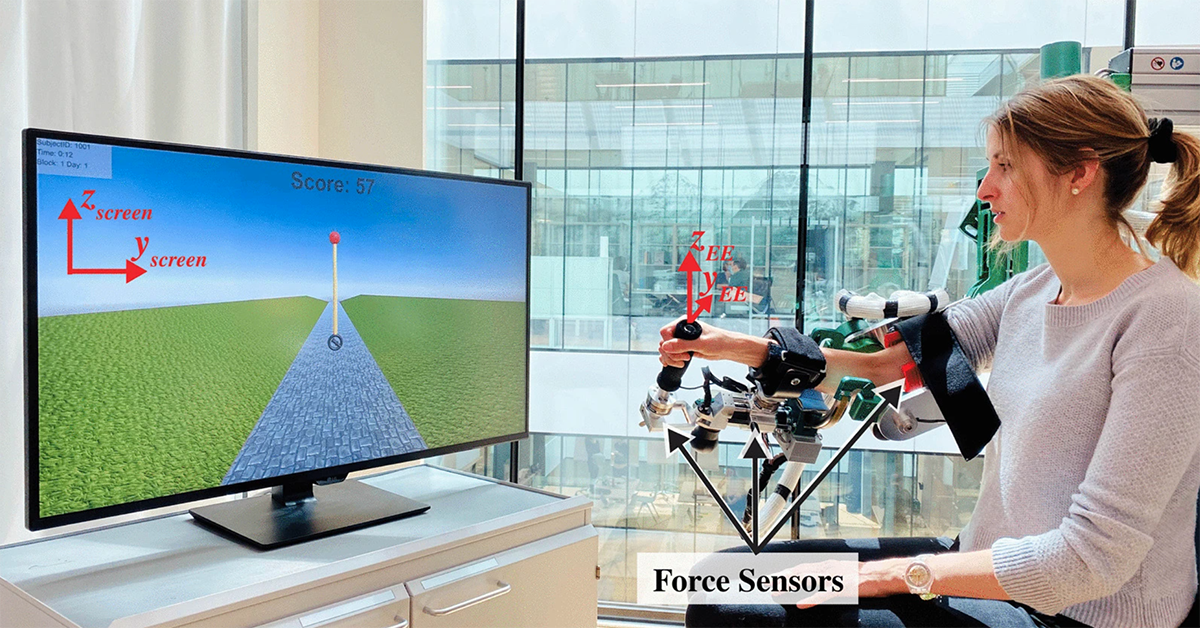2022/02/25 | Research | Robotics
Arm-weight support hampers motor learning
Robot-assisted neurorehabilitation after brain injury is aimed at supporting the re-learning of motor skills. To better reflect motor tasks of daily life, robotic rehabilitation exercises can be enhanced by haptic rendering. Arm-weight support applied to reduce physical effort, however, seems to hinder motor learning and skill transfer, as a study by the Motor Learning and Rehabilitation lab indicates.
 Experimental setup with the ARMin exoskeleton robot. The motor task consisted of inverting a pendulum and keeping it inverted. The pivot point of the pendulum was matched to the movement of the hand module of the robot. The force/torque sensors below the lower/upper arm cuffs and below the hand module allowed participants to move the robot transparently through the use of disturbance observers.
(https://doi.org/10.1186/s12984-022-00993-w)
Experimental setup with the ARMin exoskeleton robot. The motor task consisted of inverting a pendulum and keeping it inverted. The pivot point of the pendulum was matched to the movement of the hand module of the robot. The force/torque sensors below the lower/upper arm cuffs and below the hand module allowed participants to move the robot transparently through the use of disturbance observers.
(https://doi.org/10.1186/s12984-022-00993-w)
For the study, 40 healthy participants had to perform a dynamic motor task on an exoskeleton robot designed for upper limb neurorehabilitation. Participants trained with or without haptic rendering and with or without weight support to assess how both affect motor learning and skill transfer.
Both modalities increased movement variability during training. But while haptic rendering enhanced motor learning and skill transfer, training with weight support hampered learning compared to training without weight support. The authors conclude that further research is needed to find the right balance between providing robotic assistance and haptic rendering for the ideal training and learning effect, especially in brain-injured patients.